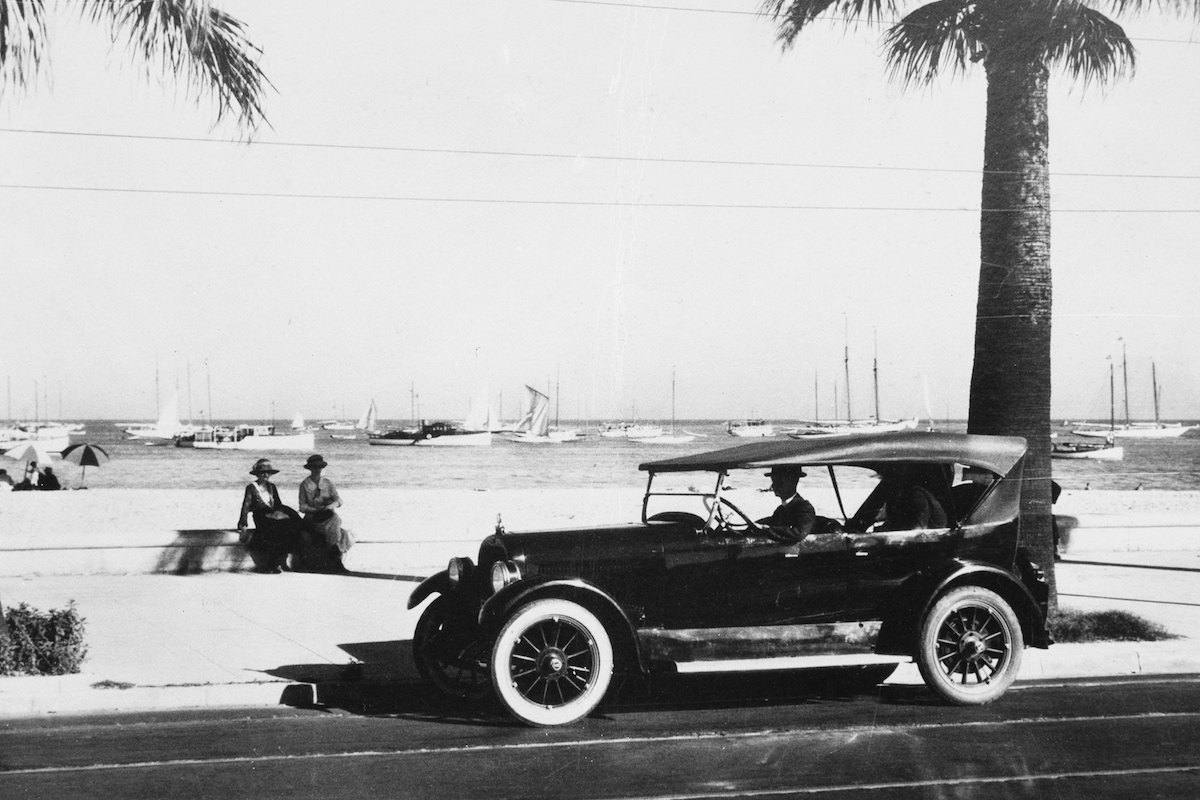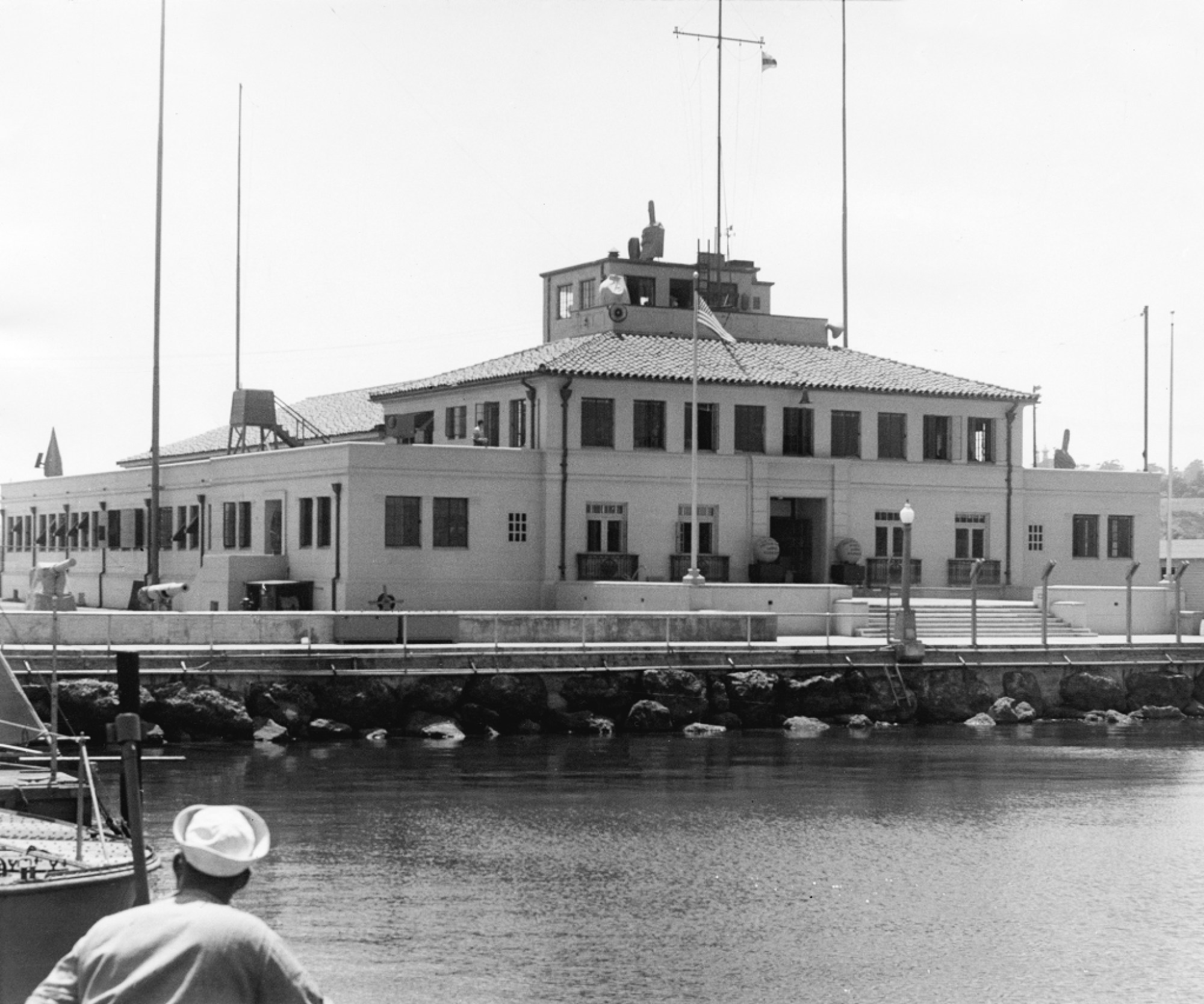Santa Barbara Maritime Museum Shows 170 Years of Harbor History
SBMM Takes a Deep Dive into the Harbor’s History with Exhibit

People are strolling on the breakwater, fishermen are docking their sailboats, and restaurants are cooking with an ocean view, all while 170 years of history vibrate around them. The Santa Barbara Harbor has been evolving for more than a century, with conflict and resolution and debate, ultimately ending in a landmark location for tourists and locals alike to enjoy.
At the Santa Barbara Maritime Museum, located on the harbor itself, they have filled the walls and rooms with artifacts that all relate to Santa Barbara maritime history. Installations, exhibits, old equipment — they have completed the museum to the very last detail.
Up the stairs and around the corner lies the history of the very place they’re situated, the harbor. The museum’s Curation Manager, Lydia Rao, provided a tour and in-depth explanation of her thought process behind creating the exhibit.
“It was so fascinating to show how the waterfront has evolved, but it was hard for me to put pieces together since different parts of the harbor were built at different times. It was like a little puzzle, putting pieces together,” Rao shared.
The exhibit is designed in chronological order, with pre-harbor land and history at the very beginning.
Rao explained how there were many decades of discussions with the government requesting a harbor, but it took a decade more for Santa Barbara to actually get one.
“Before this time [around the 1910s and 1920s], there was a need for a harbor but no one was interested. The government didn’t see any use or have any interest in it,” Rao explained. When the federal government finally offered to fully fund a harbor, those plans were stopped due to World War 1.
Before the harbor was built, the space was used as a streetcar rail-car route with a view, as well as a sidewalk for visitors to stroll along the beach.
Between 1926 and 1929, Plaza del Mar increased tourism and interest in what is now the harbor. It was the center for many activities, including the Los Baños del Mar bathhouse, which had bathing suits for rent, a pool, and changing rooms. The plaza also offered a Pleasure Pier for visitors to walk over the water and enjoy the view.

[Click to enlarge] Boats sit on their moorings before the construction of the harbor, circa 1920. | Credit: Courtesy of the Santa Barbara Maritime Museum
This pier was, however, short-lived, as the new century brought on new problems. The construction of the harbor finally began, but the large amount of sand that accumulated on West Beach ultimately caused the pier to be torn down in 1929.
Now pier-less, construction for the harbor resumed. Max Fleischmann, philanthropist and head of the Fleischmann Yeast Company, moved to Santa Barbara and anonymously put up $200,000 in funds to build a harbor if the city would match it.
This was controversial and almost scandalous. The town had to vote on it — which ultimately ended up in his favor. With the approval to build a harbor, he had two conditions: He could decide where he wanted the harbor and what materials he wanted to use.
Originally, Fleischmann wanted an inland harbor near East Cabrillo, because of its foot traffic.
“He wanted to be where the stuff was happening,” Rao explained.
Ultimately, the harbor was built on the waterfront near Stearns Wharf, the location we all know and love. When the harbor was being built, West Beach grew substantially because of the extensive sand buildup.
“We accidentally steal sand from the east and south of us, and it picks up in the harbor,” Rao said.
With this excessive amount of sand buildup, a solution was needed. Construction installed breakwater and columns to prevent longshore drift, which was successful. Further, as Santa Barbara can be famous for its big storms from El Niño and La Niña, the harbor created a corrective measure.
“We dredge the sand after a big storm, so boats can get in and out. If we don’t, they’re stuck and can’t move,” Rao said.
In 1929, the harbor was finally built, and it was a “huge success,” Rao said. The harbor was a place for sailors and locals to visit.
An annual tradition named Semana Nautica became a popular event held at the harbor. The navy would come ashore and have a friendly tug-of-war competition with community members, as well as other team-building exercises that bonded the locals and the navy. It evolved into a boat parade, where people would decorate their ships with flowers and sail around the harbor, and the evolution is interesting to see through the exhibit at the museum.
Continuing, the exhibit clips along and shows the land of the now Maritime Museum being deeded in 1939, with 90 percent of it completed by World War II. At the time, it served as a small craft training center with a focus on minesweeping. After WWII, it turned into a naval training center before finally becoming the Maritime Museum. After waterfront beautification and harbor creation, the first buildings were built in the late 1940s and early 1950s, which were more commercially focused.

The exhibit showcases different storefronts at the time, such as a boat electronics shop. Further, fishermen weren’t initially allowed into the harbor, since its center focus was a yacht club.
After World War II, they were gradually allowed in and worked their way into the harbor.
“I have to say, there’s some humorous irony there — that they have a fisherman’s wharf outside of the yacht club. Given the history!” Rao said.
In 1969, the harbor endured an oil spill that happened before it even produced its first barrel of oil. The harbor was declared a disaster zone, and this was the oil spill that inspired the creation of Earth Day.
Now finishing up the exhibit, Rao explained, “This is the first harbor built without any federal or state funding. It was built from either private or local funds, which is pretty incredible.”
Not only that, but the Santa Barbara harbor is one of the only working harbors left in the entire state.
“We’re always making small improvements, but we did never get the big harbor we dreamed of having,” Rao said.
All of the history, trials, and tribulation make the Santa Barbara harbor even more enjoyable — knowing all the dedication and passion the former citizens had for the project allow current citizens to appreciate their visits even more.
The 170 years’ worth of history can be viewed at the Santa Barbara Maritime Museum (113 Harbor Wy., Ste. 190) through January 21, 2024. For more information, see sbmm.org/santa-barbara-harbor-history.

You must be logged in to post a comment.